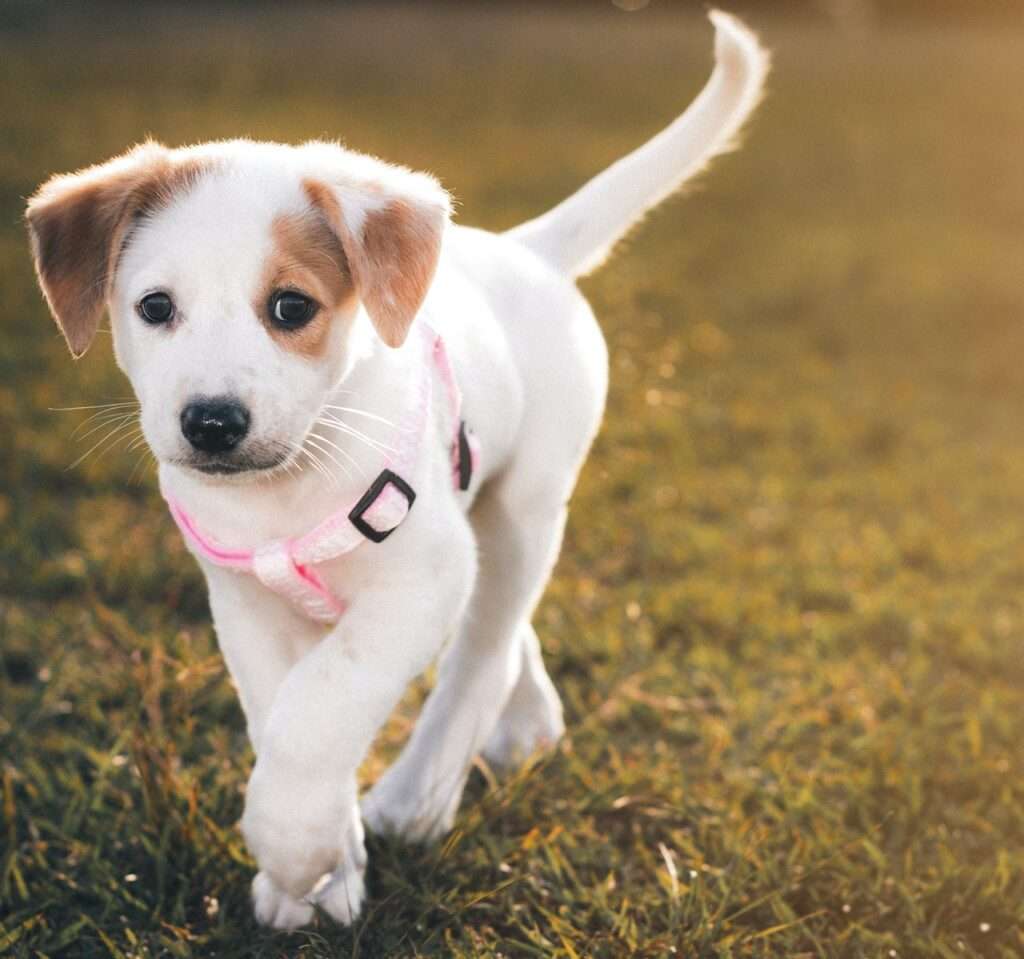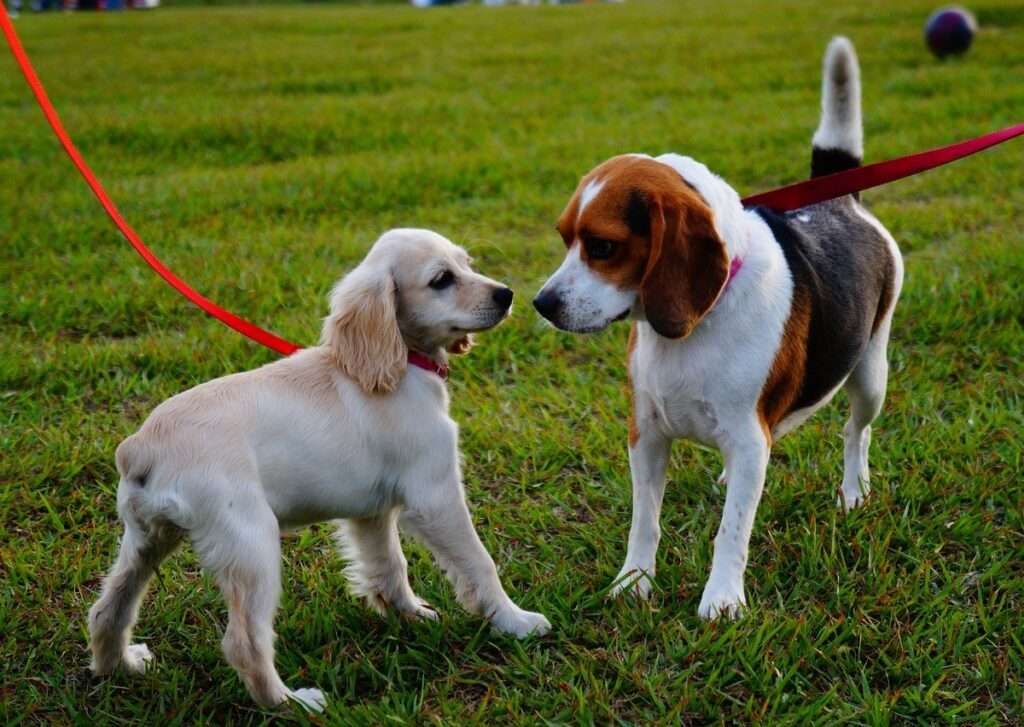When Can Puppy Go to Dog Park? A Must-Know Guide for New Pup Parents!
Bringing a new puppy into your life is an exhilarating experience filled with wiggles, tail wags, and plenty of puppy kisses. As your furry bundle of joy bounces into your home, you’re undoubtedly eager to introduce them to the big, wide world, and what better way to do that than at a dog park?
We understand your excitement, and that’s why we’ve crafted this all-encompassing guide to help you determine the perfect time for your puppy’s grand adventure at the dog park. Puppies, much like children, thrive on socialization and playtime.
Those early interactions can significantly shape their behavior and personality as they grow into adult dogs. With this guide, we aim to provide you with insights, tips, and know-how on when it’s the right time to take your adorable furball to the local dog park without any worries.
The Importance of Early Socialization
In the enchanting world of puppies, there’s a window of opportunity that’s as precious as it is fleeting—the critical socialization period. Just like a sponge soaks up water, puppies between the ages of 4 to 14 weeks absorb experiences, sights, sounds, and sniffs with astonishing speed. This period is nothing short of magical; it’s where they learn to embrace the world around them, from other furry companions to new environments.
Proper socialization during this period has far-reaching benefits that extend well into adulthood. A well-socialized puppy is more likely to grow into a confident, friendly adult dog who isn’t spooked by the rustling leaves or the sound of the neighbor’s lawnmower. And that’s where dog parks come into play (pun intended).
Dog parks offer a controlled environment where your puppy can engage with other dogs, experience different play styles, and interact with humans of all shapes and sizes. These interactions, when positive and supervised, lay the groundwork for a lifetime of harmonious interactions with both two-legged and four-legged pals.
As you read on, you’ll delve into the intricacies of puppy development, vaccination schedules, readiness signs, and the art of ensuring a smooth transition to the dog park. We’re committed to helping you make informed choices that will have your puppy’s tail wagging with joy at the thought of that ultimate adventure—the dog park!
Developmental Stages of Puppies
Embarking on this journey with your puppy means understanding the remarkable stages of their early life. From the delicate neonatal stage to the exploratory socialization stage, your puppy’s journey is nothing short of awe-inspiring.
Neonatal Stage: Birth to 2 weeks
In the first two weeks of life, your puppy is snugly nestled with their littermates and mother. Their eyes and ears remain sealed, and their primary focus is nursing and sleeping. It’s a time of pure vulnerability and growth, setting the foundation for what’s to come.
Transitional Stage: 2 to 4 weeks
Between weeks two and four, your puppy’s eyes and ears open to a whole new world. They begin to wobble around on unsteady legs, gaining their first glimpses of their surroundings. This period introduces them to sensory experiences beyond their mother’s warmth, paving the way for future exploration.
Socialization Stage: 4 to 14 weeks
Ah, the golden age of puppyhood! This is the stage that truly shines a spotlight on the magic of socialization. From 4 to 14 weeks, your puppy’s brain is a sponge, eagerly soaking up new experiences like a curious traveler exploring a foreign land. They’re open to learning about the sights, sounds, and scents that shape their understanding of the world.
During this period, your puppy’s interactions with other dogs, people, and environments play an influential role in determining their outlook on life. Fear periods might make a brief appearance during this stage, so careful positive experiences can help your puppy navigate these moments and emerge stronger.
Puppy’s Vaccination Timeline
As you prepare your adorable puppy for their grand debut at the dog park, you’ll encounter another vital factor: vaccinations. These little injections pack a powerful punch, protecting your furry friend from a range of diseases. Let’s dive into what you need to know.
The Importance of Vaccinations for Puppies
Just like you’d roll up your sleeves for a flu shot, your puppy needs their own line of defense against preventable diseases. Vaccinations provide that protection. These immune-boosting marvels help your pup’s body recognize and combat harmful pathogens, keeping them healthy and resilient.
Core Vaccines and Non-Core Vaccines
Vaccines come in two main categories: core and non-core. Core vaccines are essential for all puppies, as they guard against life-threatening diseases that are highly contagious. Examples include rabies, distemper, parvovirus, and canine hepatitis. Non-core vaccines, on the other hand, are recommended based on your pup’s individual risk factors, like their lifestyle and location.
Understanding Your Puppy’s Vaccination Schedule
Vaccination schedules are a bit like personalized itineraries for your pup’s health journey. Your veterinarian will create a tailored plan based on factors like breed, age, and local disease prevalence. The first vaccines typically start around 6 to 8 weeks of age, with boosters administered at specific intervals.
Factors to Consider Before Visiting a Dog Park

Before you and your puppy set off on that exciting dog park adventure, there are a few key factors to take into account. It’s all about timing, preparation, and setting the stage for a successful experience.
- Your Puppy’s Age: As your puppy dances through the early stages of development, you might be wondering when the perfect moment arrives for that inaugural dog park outing. While the socialization stage (4 to 14 weeks) is a prime time for positive experiences, it’s crucial to strike a balance. Wait until your puppy’s immune system is bolstered by vaccinations before introducing them to the bustling world of the dog park.
- Completion of Initial Vaccinations: Vaccinations are the superheroes of puppy health, but they need a bit of time to fully gear up. It’s typically recommended to wait until your pup has received their initial round of vaccinations before venturing to the dog park. This reduces the risk of exposure to potentially harmful pathogens while ensuring your pup is ready for a safe and enjoyable experience.
- Building Basic Commands and Leash Manners: Before your puppy leaps into the world of unleashed freedom at the dog park, it’s wise to have a few basic commands up their furry sleeve. Commands like “sit,” “stay,” and “come” provide you with a solid foundation for managing their behavior in an open environment. Additionally, mastering leash manners is a must to ensure a smooth transition from the parking lot to the play area.
- Your Puppy’s Temperament: Just as we all have unique personalities, so do our furry companions. Take a moment to observe your puppy’s temperament. Are they naturally curious, confident, and playful, or do they lean more towards caution and shyness? A confident puppy is more likely to handle the dynamic dog park setting with ease, while a shy pup might benefit from a bit more gradual socialization.
Signs Your Puppy is Ready for the Dog Park
The anticipation is building as you consider that exciting dog park outing. But how do you know if your puppy is truly prepared for this new adventure? Look for these signs that indicate they’re ready to join the ranks of frolicking furballs.
- Positive Interactions with Other Dogs: Puppies with a penchant for puppy playdates might be showing you a glimpse of their readiness for the dog park. If your pup has had positive interactions with other dogs in controlled settings, they’re likely to embrace the dog park’s social atmosphere.
- Curiosity and Interest in Exploring New Environments: Watch for your puppy’s reaction when they encounter new sights, smells, and sounds. If their curiosity sparks excitement rather than fear, they’re demonstrating an eagerness to explore, which is a promising indicator for a dog park adventure.
- Exhibiting Confidence and Non-Aggressive Behavior: Confidence is a key ingredient for dog park success. Puppies who walk with a wagging tail, engage in play without excessive fear or aggression, and display a healthy curiosity towards their surroundings are prime candidates for the dog park.
- Responses to Different Stimuli: Observe how your puppy reacts to various stimuli beyond their immediate environment. If they’re relatively unfazed by sudden noises, passersby, and other animals, it’s a sign that they possess the adaptability necessary to thrive in the dog park atmosphere.
Stay tuned as we navigate deeper into the realm of puppy readiness and explore the subtle nuances that guide you towards the perfect moment for your puppy’s dog park debut. Your puppy’s comfort and happiness are at the forefront of this adventure, and we’re here to ensure every tail wag is a joyous one!
Preparing for the First Dog Park Visit
The stage is set, and your puppy’s big day at the dog park is fast approaching! But before you dive into the heart of the action, a bit of preparation can go a long way in ensuring a smooth and enjoyable experience for both you and your furry friend.
- Choosing the Right Dog Park: Dog parks come in various shapes and sizes, just like our four-legged companions. Opt for a park that aligns with your puppy’s needs and personality. Consider factors such as park size, available amenities (think water fountains and shaded areas), and location in relation to your home. The goal is to find a park that suits your pup’s play style and your comfort as their trusted guardian.
- Packing Essentials: Before you embark on your dog park adventure, gather your puppy’s essentials. A portable water bowl, plenty of poop bags, and a pocketful of tasty treats are must-haves. While many dog parks offer off-leash areas, it’s wise to keep a leash handy for times when a little extra control is needed.
- Mental and Physical Preparation for Both You and Your Puppy: Attitude is everything, and approaching the dog park with a calm, positive demeanor sets a relaxed tone for your puppy. Give your pup a chance to burn off excess energy before you arrive to help them interact more peacefully with their newfound friends. A short walk or some playtime at home can do wonders.
Ensuring a Positive Dog Park Experience
The time has come to step into the dog park realm, where tails wag, paws scamper, and friendships are forged. Your puppy’s first experience here can set the stage for a lifetime of joyful dog park outings. Here’s how to make it count.
- Arriving at the Park During Non-Peak Hours: Timing is everything when it comes to introducing your puppy to the dog park. Opt for non-peak hours, when the park is less crowded. This provides your pup with a chance to acclimate to the environment without feeling overwhelmed by a bustling crowd of new faces.
- Observing the Park Dynamics Before Entering: Take a few moments to observe the dynamics within the dog park before you enter. Are the dogs playing harmoniously? Is there a balanced mix of large and small dogs? A peaceful scene sets the stage for a positive experience for your puppy.
- Choosing the Right Area for Your Puppy’s First Visit: Dog parks often have designated areas for different dog sizes and play styles. Opt for the area that aligns with your puppy’s age, size, and temperament. If your pup is small and still finding their pawing feet, the area for small or timid dogs might be the ideal starting point.
- Gradual Introductions to Other Dogs: Your puppy’s first interactions at the dog park can influence their perception of this lively playground. Start by introducing them to one or two well-behaved dogs on a leash. These controlled interactions help build positive associations and set the stage for future off-leash romps.
The journey into the world of the dog park is well underway, and your puppy’s excitement is undoubtedly palpable. As you navigate these crucial steps, keep in mind that every wagging tail and joyful bark are building blocks in the creation of heartwarming memories.
Supervising Your Puppy at the Dog Park
As your puppy takes their first playful steps into the dynamic world of the dog park, your role as their trusted guide becomes all the more vital. With the following insights and proactive supervision, you can ensure a safe and joyful experience for your furry friend.
- Staying Attentive and Vigilant: Your puppy’s safety is your top priority, so keep your eyes and ears attuned to their interactions and surroundings. Being present allows you to swiftly intervene if play escalates or any concerns arise.
- Monitoring Play Behaviors and Body Language: Dogs communicate largely through body language, and being able to read these cues can provide valuable insights into your puppy’s state of mind. Healthy play involves loose, wiggly movements, wagging tails, and relaxed postures. Keep an eye out for these positive signs as well as any signs of discomfort or tension.
- Intervening in Case of Conflicts or Bullying: Just like in any social setting, disagreements can occur among dogs at the park. If you notice any interactions that escalate into conflict or bullying, it’s time to step in and redirect the energy. A simple distraction with a toy or treat can often defuse tension and restore harmony.
- Encouraging Positive Interactions and Rewarding Good Behavior: Positive reinforcement is a powerful tool in shaping your puppy’s behavior. Praise and reward your pup when they engage in polite play, respond to their name, or come when called. These rewards create positive associations and encourage desired behaviors, contributing to an overall positive dog park experience.
Signs of Overwhelm and Stress in Puppies
As you navigate the vibrant world of the dog park with your puppy, it’s crucial to be attuned to their emotional well-being. Puppies, like us, can sometimes feel overwhelmed or stressed, and recognizing these signs ensures a smoother journey.
- Understanding When Your Puppy is Overwhelmed: Puppy play can sometimes escalate in intensity, and your pup might become overwhelmed by the commotion. Signs of overwhelm include flattened ears, tucked tail, and seeking to hide behind you or under a bench.
- Recognizing Signs of Stress and Anxiety: Stress can manifest in various ways, such as excessive panting, yawning, lip licking, and rapid shifts in body posture. If you notice your puppy engaging in these behaviors, it might be a sign that they need a moment to regroup.
- Knowing When It’s Time to Leave the Park: Your puppy’s comfort and happiness come first, and sometimes that means making the decision to leave the park if they’re feeling uneasy. If you notice persistent signs of stress, it’s okay to call it a day and head home, ensuring a more positive experience next time.
Gradually Increasing Dog Park Visits

Just as your puppy’s growth is a journey, so is their progression at the dog park. The key lies in gradual steps that align with their comfort level and confidence. Here’s how to ensure each visit is a step forward on the path to a dog park-savvy pup.
- Monitoring Your Puppy’s Progress Over Visits: Like a budding flower, your puppy’s confidence and interactions at the dog park will evolve over time. Observe how they engage with other dogs and people, and note any positive changes or areas that might need a bit more attention.
- Gradually Increasing the Duration of Park Visits: As your puppy acclimates to the dog park environment, you can gradually extend their stay. Start with shorter visits and gradually increase the duration to ensure they remain engaged and positive throughout.
- Introducing Off-Leash Play if Appropriate: If your puppy’s confidence continues to grow and they exhibit positive interactions with other dogs, consider introducing off-leash play. Choose a time when the park is less crowded, and allow your pup to explore the space freely while keeping a watchful eye.
- Noticing Changes in Behavior and Confidence Levels: Your puppy’s personality and behavior will continue to blossom as they gain more exposure to the dog park. Keep an eye out for signs of increased confidence, enjoyment, and sociability. Celebrate these small victories—they’re a testament to your pup’s growth.
Alternatives to the Dog Park
While the dog park is a delightful haven for socialization, it’s not the only avenue to nurture your puppy’s development. Here are some alternatives that offer different opportunities for growth and bonding.
- Setting Up Playdates with Known Dogs: Arrange playdates with dogs you know and trust. These controlled interactions allow your puppy to develop friendships at their own pace, fostering positive experiences that contribute to their socialization.
- Puppy Classes and Training Sessions: Puppy classes provide a structured environment where your pup can learn obedience, social skills, and basic commands. These classes not only contribute to their growth but also offer a chance for you to bond and communicate effectively.
- Controlled Outdoor Environments for Socialization: Venturing beyond the dog park, controlled outdoor spaces like local trails or quiet parks can provide a low-stress setting for your puppy to explore new environments and meet new people and dogs.
As we journey toward the conclusion of this guide, remember that every puppy’s timeline is unique. Your puppy’s readiness and comfort should guide your decisions, ensuring their experiences are positive, enriching, and in line with their personality. With these alternatives in mind, you’re equipped to foster a confident and well-rounded pup who is ready to embrace the world.
Conclusion
As we arrive at the end of this journey, your puppy’s readiness for the dog park shines as a beacon of success. You’ve embraced the delicate balance of patience and enthusiasm, ensuring that each step toward the dog park was thoughtfully guided by your pup’s well-being. The adventure ahead is a testament to your dedication to creating a positive, joy-filled experience for your furry friend.
Just as a symphony crescendos to its final note, your puppy’s journey to the dog park unfolds with purpose and harmony. The knowledge that there’s no one-size-fits-all approach underscores the uniqueness of your pup’s personality and growth trajectory. Every cautious sniff, wagging tail, and enthusiastic play-bow is a melody that adds to the exquisite tapestry of your puppy’s development.
As responsible puppy guardians, your role doesn’t end with that triumphant dog park debut. It continues through ongoing training, nurturing, and guidance. Each interaction, whether at the dog park, during playdates, or within your home, shapes your pup’s character and outlook on the world. Your dedication to fostering a well-adjusted, socialized, and joyful companion is an invaluable gift.
Beyond the dog park, the journey continues. The bonds you cultivate, the positive experiences you create, and the guidance you provide are the building blocks of a lifetime of shared adventures. Every wag, bark, and tail-chasing escapade is a chapter in your pup’s story, and you’re the author of their joyful journey.
Frequently Asked Questions
Q: When can I take my puppy to the dog park?
A: The ideal time varies based on factors like age, vaccinations, and temperament. Generally, after completing initial vaccinations, around 16 weeks can be a safe starting point.
Q: What developmental stages should I consider?
A: The socialization stage (4 to 14 weeks) is vital. During this period, positive experiences shape your puppy’s outlook on the world, making it an opportune time for dog park exposure.
Q: What signs show my puppy is ready?
A: Positive interactions with dogs, curiosity towards new environments, and confidence are promising signs. Observe their body language and adaptability.
Q: How do I ensure a smooth first dog park visit?
A: Choose a suitable park, pack essentials like water and treats, and mentally and physically prepare both you and your puppy for a positive experience.
Q: What’s the role of supervision at the dog park?
A: Stay attentive, monitor play behaviors, intervene if conflicts arise, and reward positive interactions. Supervision fosters a safe and enjoyable environment.
Q: What are signs of overwhelm and stress in puppies?
A: Signs include flattened ears, tucked tail, excessive panting, and attempts to hide. Recognizing these cues helps you manage their comfort.
Q: How can I gradually increase dog park visits?
A: Monitor progress over visits, increase duration gradually, and consider introducing off-leash play if your puppy’s interactions remain positive.
Q: Are there alternatives to the dog park for socialization?
A: Yes, setting up playdates with known dogs, attending puppy classes, and exploring controlled outdoor environments offer diverse socialization options.
Q: Why is responsible ownership important in this journey?
A: Responsible ownership ensures your puppy’s well-being, shapes their behavior, and strengthens your bond. It’s a commitment that goes beyond the dog park.
Q: What resources can I explore for more information?
A: Recommended books on puppy socialization, online communities, and professional trainers can provide valuable guidance and support.
Resources and Further Reading
As you embark on this wondrous path of puppyhood, there are numerous resources and avenues for further learning. Here are some recommended materials to guide you:
- “Perfect Puppy in 7 Days: How to Start Your Puppy Off Right” by Dr. Sophia Yin
- “The Puppy Primer” by Patricia B. McConnell and Brenda Scidmore
- “The Art of Raising a Puppy” by The Monks of New Skete
Additionally, online communities and forums dedicated to puppy owners offer a wealth of shared experiences, advice, and support. Consider reaching out to professional trainers and behaviorists who can provide personalized guidance tailored to your puppy’s needs.
As you close this chapter and open the next, remember that the journey of puppyhood is one of discovery, growth, and cherished moments. With your unwavering love and commitment, your puppy’s path is paved with pawprints of happiness, and every adventure is an opportunity to celebrate the boundless joy that only a puppy can bring.




